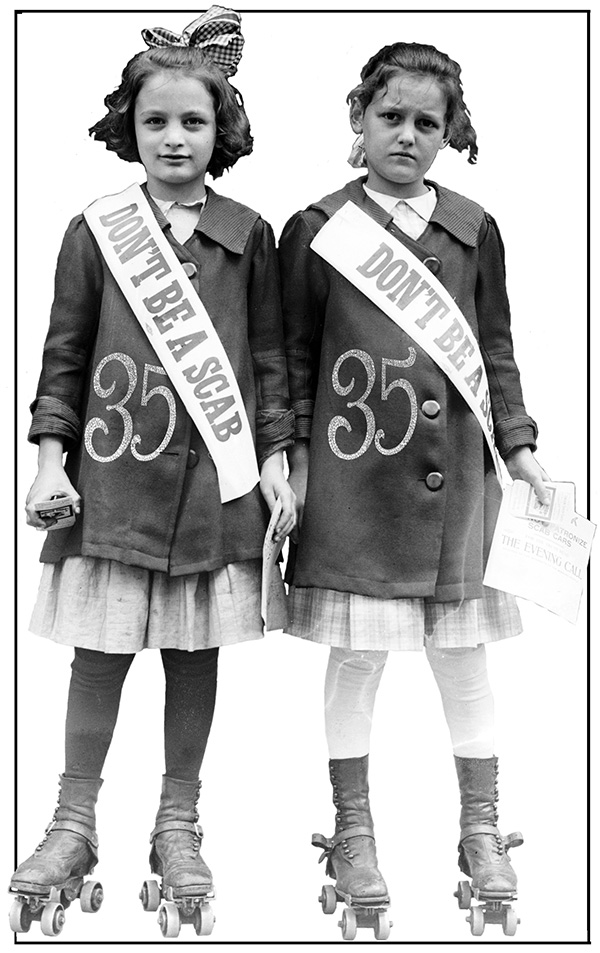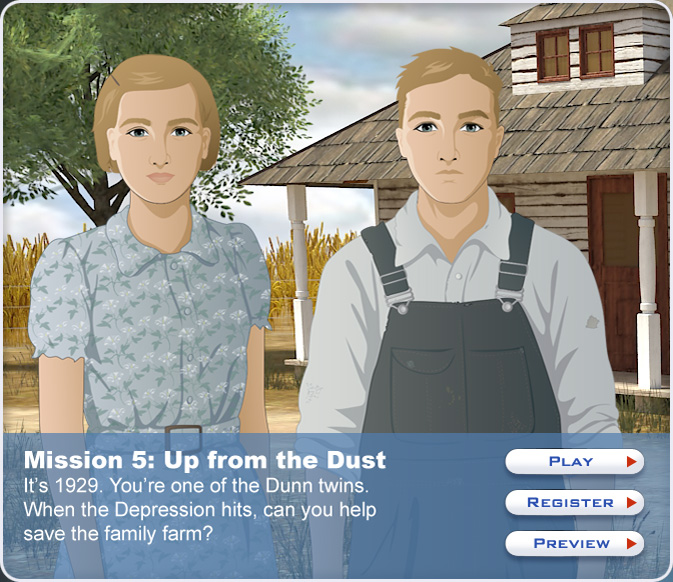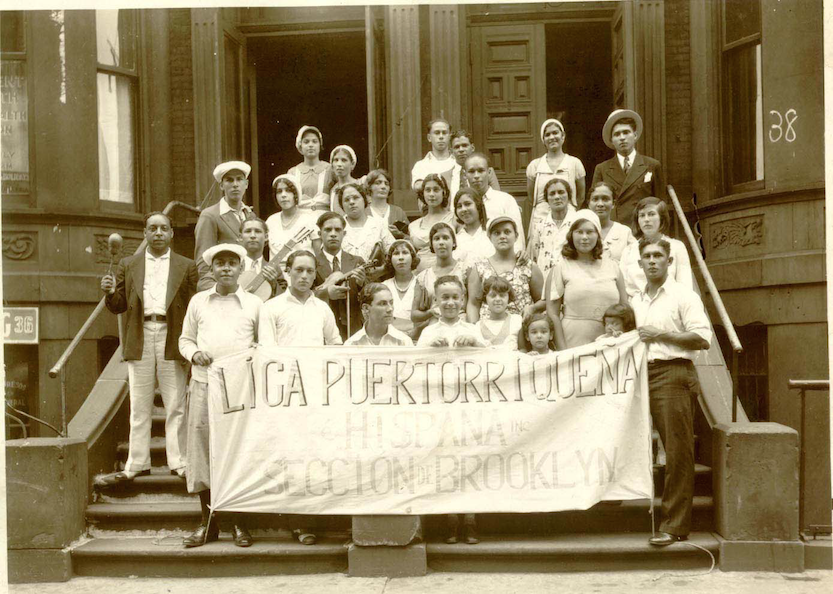September 2016
The American Social History Project Reaches A Banner Year!

This fall the American Social History Project is old enough to run for president of the United States! The year 2016 marks the 35th anniversary of ASHP’s founding--and to commemorate this milestone in our history, we will hold a public event that celebrates our past and also reflects on the achievements, challenges, and continuing goals of the fields of history education and public history of which we are a part.
The Past and Future of Public History: A Symposium in Celebration of 35 Years of the American Social History Project will be held on Friday, October 21, from Noon to 4 p.m. in the Elebash Recital Hall at the City University of New York Graduate Center (ASHP’s first and current home). The program will feature two roundtable discussions with notable thinkers and creators who, supplemented by contributions from the audience, will offer their experiences about and comment on the issues of “Whose History in Public History?” and “Changing Modes of Engaging the Public.” The roundtable participants will include: Eric Contreras (Stuyvesant High School), Dan Cohen (Digital Public Library of America), Michael Frisch (State University of New York–Buffalo), Cynthia Jones (Hostos Community College, CUNY), Ari Kelman (University of California–Davis), Don Perry (Digital Diaspora Roadshow), Claire Bond Potter (The New School), Leah Potter (Electric Funstuff), Liz Ševčenko (The New School), and John Kuo Wei Tchen (New York University). The program will conclude with a keynote address by James R. Grossman, executive director of the American Historical Association, and will be followed by a reception.
We cordially invite you to this event—and urge you to RSVP on the symposium webpage, which in the coming weeks will provide additional information about the program.
Up from the Dust – A New Mission US Release

Up from the Dust, the fifth in the Mission US series of online history games produced in collaboration with New York public television station WNET/Thirteen and game producer Electric Funstuff, was released on September 2nd. The role-playing game provides young people with an experiential understanding of the enormous hardships Americans faced during the late 1920s and early 1930s as they struggled against the joint catastrophes of the Dust Bowl and the Great Depression. The game is divided into five parts, with a prologue offering background on the settlement of the Texas panhandle and the expansion of wheat farming, and an epilogue extending the story of the main characters through World War Two.
Students playing the game assume the roles of Frank and Ginny Dunn, twins growing up on their family wheat farm near Dalhart, Texas. The game begins in summer 1929 and follows family members as they confront falling wheat prices, drought, and depression. In 1932, Frank encounters nationwide desperation, political organizing, and local protests when he decides to "ride the rails" in search of work and adventure. In the meantime, Ginny tries to help her family and neighbors survive hard times, but after the massive 1935 Black Sunday dust storm she decides to join migrants heading for California. As both Frank and Ginny experience the benefits and limitations of New Deal government programs, students will understand how "ordinary people" survived this critical period in U.S. history.
Deeply researched and informed by the most recent scholarship, Up from the Dust was developed for middle- and high-school students and was funded by the National Endowment for the Humanities. The Mission US series now has more than one million registered users nationwide and has garnered major awards and citations—this year alone games received the Parents' Choice Gold Award for the Best Learning Game, were a Finalist for the Games for Change Awards, and a nominee for the Daytime Emmy Awards in the Outstanding Interactive Media category. And this summer NEH awarded the series a Digital Humanities Implementation Grant to "revitalize" early Mission US games to enhance access and include features developed later in the series.
2016 NEH Summer Institute – The Visual Culture of the American Civil War and Its Aftermath

During two steamy weeks this past July, the American Social History Project/Center for Media and Learning held our third National Endowment for the Humanities Summer Institute. “The Visual Culture of the American Civil War and its Aftermath” institute was hosted by the CUNY Graduate Center and three New York City cultural institutions (New York Public Library, New-York Historical Society, and the Metropolitan Museum of Art). Attended by thirty NEH Summer Scholars selected from colleges, universities, and museums across the country, the institute featured presentations, discussions, visits to local archives and museums, and hands-on workshops that focused on the era’s visual media to assess how information and opinion about the war were recorded and disseminated, and to consider ways visual media expressed and shaped Americans’ understanding on both sides of the conflict. For this third institute, we extended its purview to address the struggle for equality beyond the years of the war, imcluding the visualization of the extended war in the West, Reconstruction, and the Gilded Age.
The institute featured talks by eleven noted historians, art historians, and archivists representing the range of current work in the field. In addition, a team of four institute faculty (Joshua Brown, Sarah Burns, Gregory Downs, and David Jaffee) guided the participating scholars in ways to use visual evidence to enhance their research, writing, and teaching about the war and its short- and long-term effects. Topics discussed during the institute included Civil War photography, visualizing slavery and anti-slavery, the illustrated press, political cartoons, maps, textiles, Emancipation, the wartime and postwar West, and commemorative sculpture and public monuments (the full schedule of activities and speakers is available here).
Thanks to a supplementary NEH grant, many of the institute’s resources and activities will be available online on The Visual Culture of the American Civil War website. The site, which currently includes sessions from our 2012 and 2014 institutes, and soon the 2016 institute, features video lectures and related picture galleries, primary documents, and print and multimedia bibliographies.
ASHP works with Reading Area Community College on NEH Conexiones program

Reading Area Community College in Pennsylvania, in partnership with ASHP/CML, was a awarded a two-year National Endowment for the Humanities (NEH) professional and curricular development grant focusing on Latino history and culture. Conexiones: Linking Berks County Latino Communities to a Larger World, aims to build faculty participants' competency in Latino history and culture, and help them develop Latino-based humanities content for Reading Area Community College’s (RACC) general education and other courses. ASHP will conduct four seminars featuring noted scholars and archive and museum professionals. In addition, teaching workshops featuring active learning pedagogies will focus on advancing student learning with primary source documents (text, visual art, audio, film), and help faculty create new and updated teaching modules.
Conexiones builds upon efforts begun by RACC faculty during ASHP’s 2013-2015 NEH-funded Bridging Historias program, which introduced thirty-six community college faculty to Latino histories and cultures and provided curriculum design support. RACC faculty participants designed three program courses: "Latino Literature and Writing," "Latino Community Scholars," and "Spanish for Heritage Speakers." Conexiones will focus on the three most dominant Latino groups in the Reading area: Dominicans, Mexicans, and Puerto Ricans. The first college to be federally designated as an Hispanic-serving institution (in 2015), RACC will collaborate with local cultural, historical, and social service organizations to strengthen ties between campus and community-based activities. By the end of fall 2018, RACC will have a collection of digitial teaching resources, a Latino Studies Associates of Arts program, and a dedicated network of educators and community leaders promoting Latino scholarship in Berks County, Pennsylvania.
New Collections Now Available in the CUNY Digital History Archive

As higher education is increasingly a subject of contentious debate, one way to explore the history of our own public university system is to visit the onine CUNY Digital History Archive. This online participatory archive and portal is a work-in-progress and we welcome your contributions. Focused on stories and material that document the struggle to build and sustain the democratic mission of the university and its colleges, this growing resource will inform and involve teachers, students and the general public. Visitors to the website can do keyword searches, browse all items (now over 300), or search by subject, date, or collection.
This summer we completed "Free Speech at CCNY, 1931-1942," contributed and curated by former City College of New York faculty member Carol Smith. This collection contains images, articles, fliers, and more detailing the fight that CCNY faculty and students waged during the 1930s and early 1940s in opposition to the New York State legislative Rapp-Coudert Committee's attacks on left faculty and in support of their freedom of speech on campus.This and all collections contain an introductory essay plus an assortment of primary documents, many never before published.
Also recently posted (with more to come) are items from the "Save Hostos!" collection, contributed by former Hostos Community College professor Gerald Meyer. Articles, documents, fliers, and images reveal the fierce community/college/ union battle that ultimately saved the college in the 1970s.
Explore the Archive and get involved in building and disseminating these important materials!
